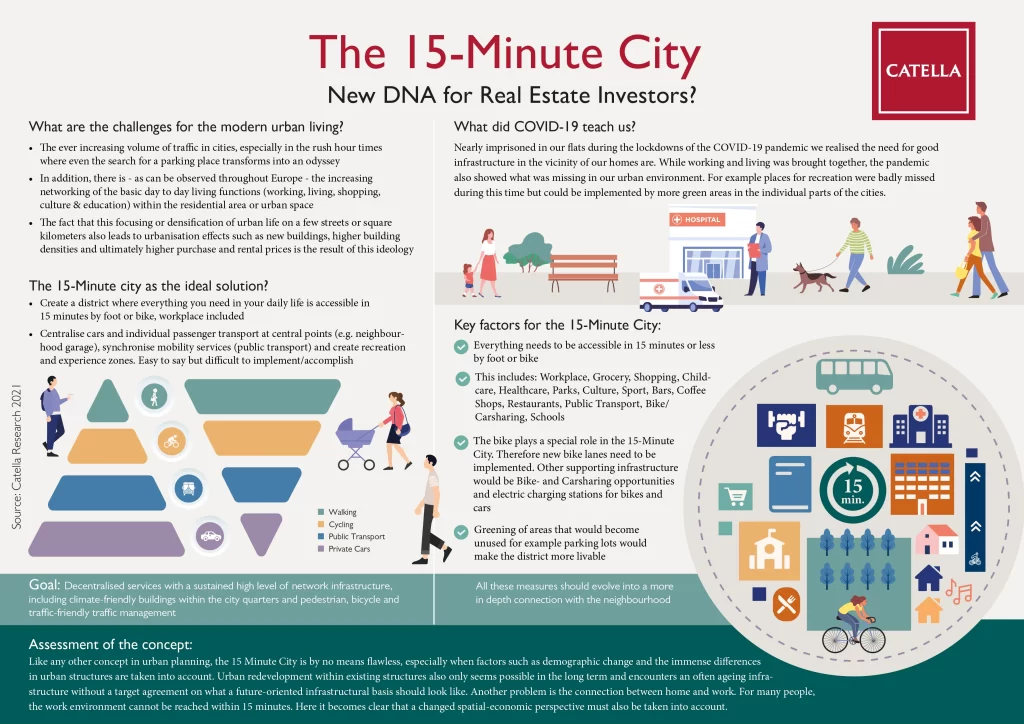China is to promote the construction of “living circles” in cities at the prefecture-level and above that enable residents to conduct all of their essential activities within a 15-minute walk of their homes.
The project is laid out in a three-year action plan released by the Ministry of Commerce (MOC) and 12 other departments on Wednesday.
The plan states that residents living in targeted areas will be able to find places to fulfill their needs for shopping, catering, housekeeping and repairing services within a 10-minute walk from home, while enjoying consumption-upgrading goods and services related to culture, entertainment, leisure, social communication, healthcare and fitness within 15 minutes of walking.
Services related to elderly care and child care around communities will also be promoted, said the plan.
According to the document, efforts should be made to optimize the commercial layout in communities, provide better consumption conditions and more innovative consumption scenarios, make communities smarter, while creating more jobs and improving the incomes of residents.
The construction of the community living circles is already underway, with a total of 2,057 circles created in the first two batches of 80 pilot areas nationwide benefitting 42.01 million community residents, said the MOC.

The 15-minute city is a concept of urban planning that aims to create cities where everything you need is within a 15-minute walk or bike ride. This includes your home, work, school, shops, healthcare, and leisure activities.
There are a number of benefits to living in a 15-minute city. These include:
- Reduced car dependency: If you can walk or bike to everything you need, you’ll use your car less. This can save you money on transportation costs and reduce your carbon footprint.
- Improved health: Living in a walkable city can help you stay active and healthy. You’ll be less likely to be overweight or obese, and you’ll have a lower risk of developing chronic diseases such as heart disease, stroke, and diabetes.
- Increased social interaction: When you live in a walkable city, you’re more likely to interact with your neighbors and community members. This can help you feel more connected to your surroundings and improve your mental health.
- Enhanced sense of place: When you can walk or bike to everything you need, you’re more likely to feel a sense of connection to your neighborhood and city. This can make you feel more at home and less stressed.
There are a number of challenges to creating 15-minute cities. These include:
- Land use: 15-minute cities require a different type of land use than traditional cities. There needs to be a mix of uses in close proximity, and there needs to be enough space for people to walk and bike.
- Transportation: 15-minute cities require a different type of transportation system than traditional cities. There needs to be more emphasis on walking, biking, and public transportation, and there needs to be less emphasis on cars.
- Cost: Creating 15-minute cities can be expensive. It requires investment in infrastructure, such as sidewalks, bike lanes, and public transportation.
Despite the challenges, there are a number of cities that are working to create 15-minute cities. These include:
- Copenhagen, Denmark: Copenhagen is one of the most walkable cities in the world. It has a well-developed public transportation system, and it is working to make it easier for people to walk and bike.
- Paris, France: Paris is another city that is working to create a 15-minute city. It has banned cars from some parts of the city center, and it is investing in new bike lanes and public transportation.
- Barcelona, Spain: Barcelona is also working to create a 15-minute city. It has created a network of “superblocks” that are designed to be self-sufficient. Each superblock has its own shops, schools, and parks, so residents can meet most of their needs without leaving the area.
The 15-minute city is a promising model for urban planning. It has the potential to reduce car dependency, improve health, and enhance social interaction. If more cities adopt this model, we can create more sustainable and livable cities for the future.
Shayne Heffernan









